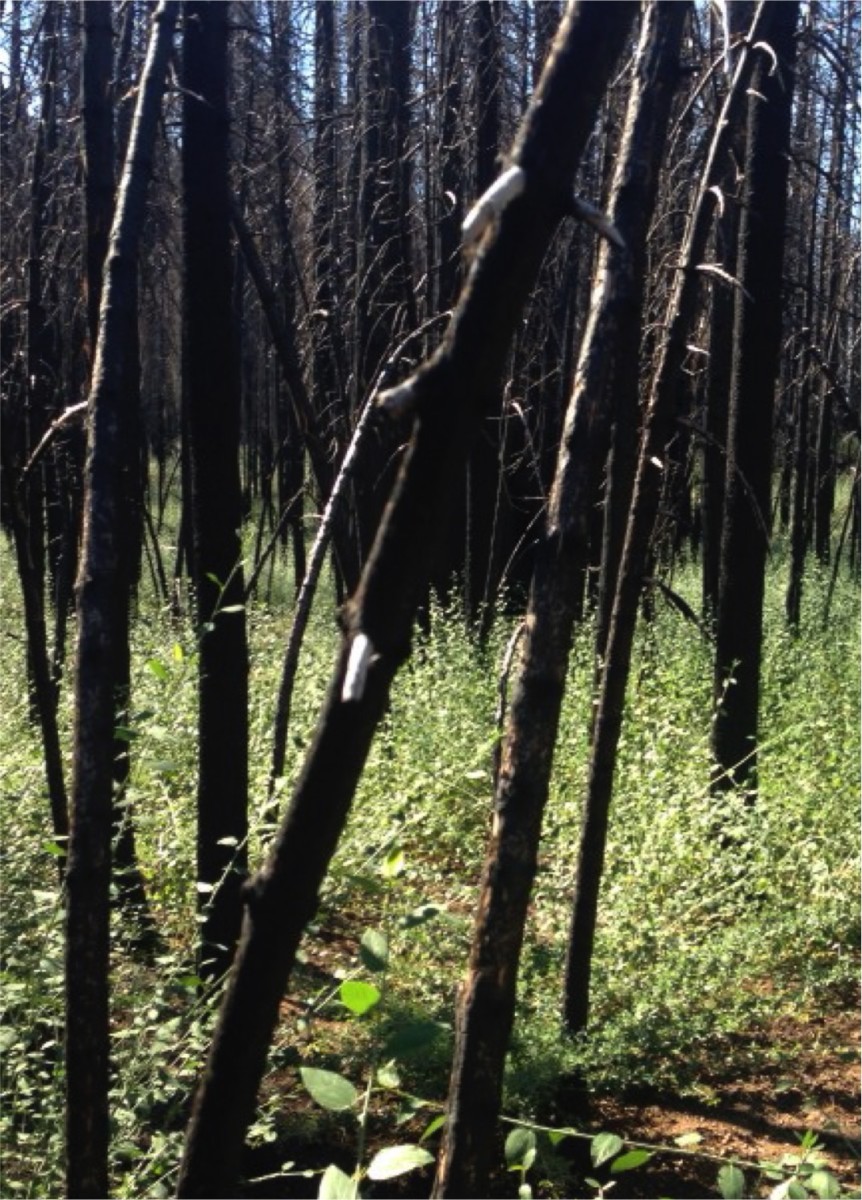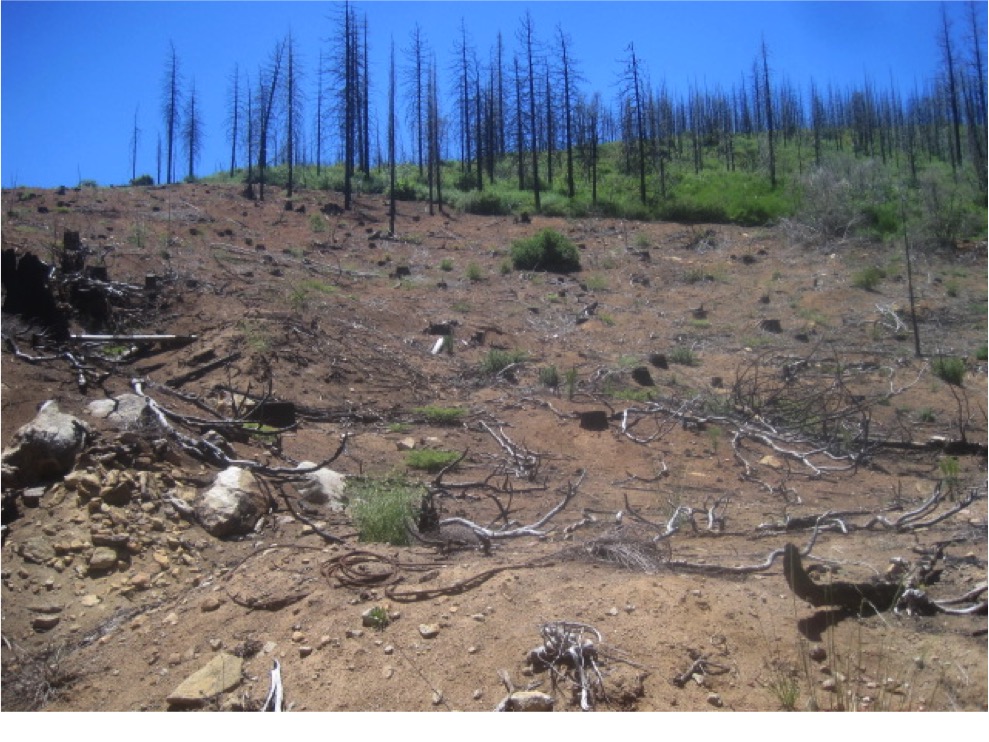
Recognizing the value of forest habitat for wildlife, recreation, wood production, watershed health, and scenic beauty, the Yosemite Stanislaus Solutions (YSS) collaborative group, along with CSERC and other local groups, supported Rim reforestation (planting conifer seedlings to get a new forest growing). But the Forest Service created controversy by putting forward a plan to spray herbicides across all reforestation sites, allowing every planted area to be sprayed up to four times.
As CSERC staff monitors USFS land in the Rim Fire area, we’ve found that many areas with few surviving trees have dense brush growing that will shade out or compete with any planted conifer seedlings. On SPI’s private timberland in the fire, intensive herbicide treatments eliminated almost all the competing vegetation. The photo below shows the sharp contrast between chemically denuded SPI land and adjacent USFS land. Rather than accept SPI’s level of chemical treatment on USFS land, CSERC has advocated for limited, one-time use only where other treatments can’t be effective.


